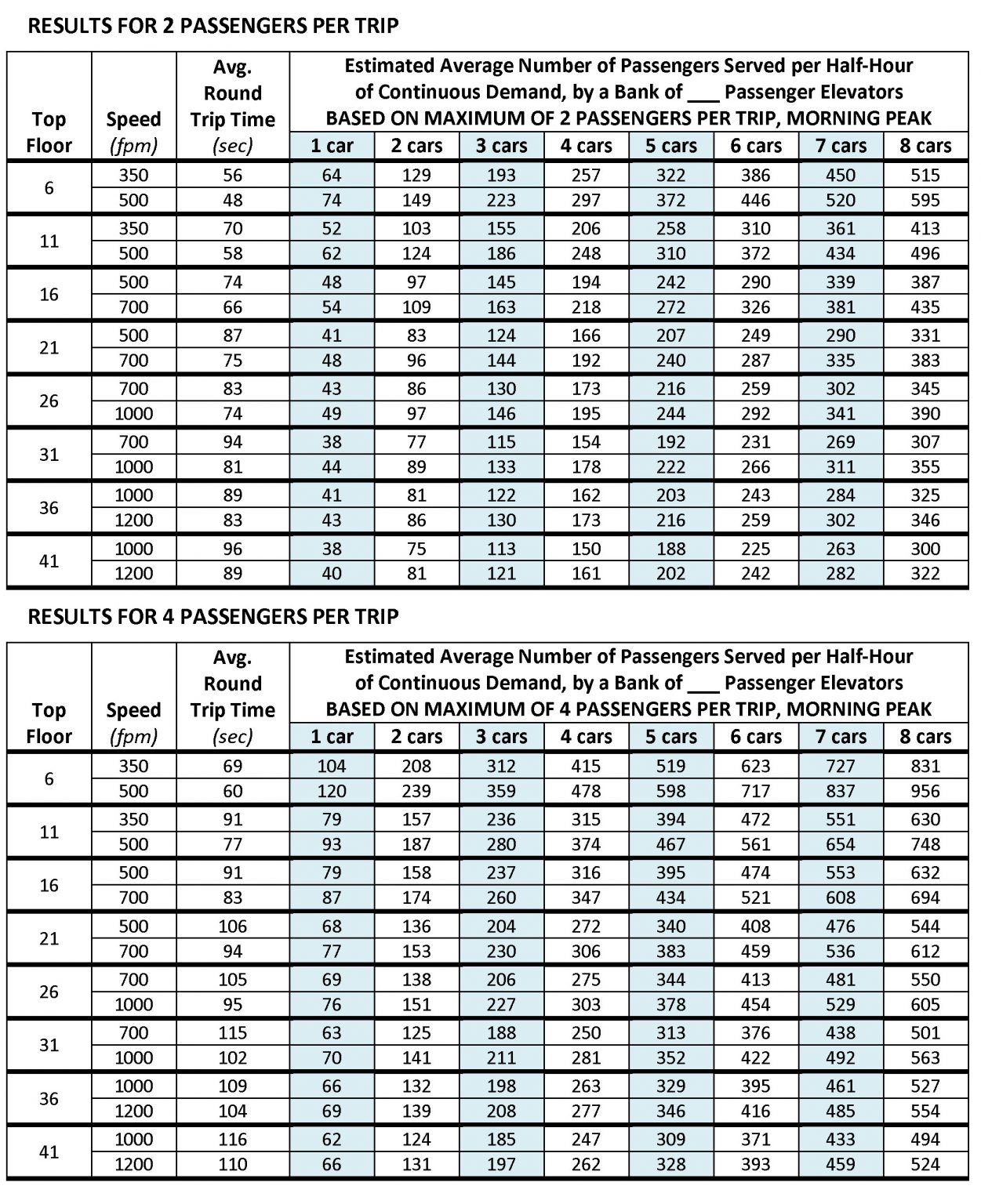Traffic Prediction Plans
May 12, 2020
Estimated elevator capacity with limited cab loading scenarios (for COVID-19 office building re-occupation planning)
INTRODUCTION
The following is a calculated estimate (using theoretical elevator traffic analysis techniques) of how many people can be served by a particular number of elevators in group service with a particular speed, serving up to an approximate top floor, in 100% up direction morning peak traffic.
The results are the number of passengers predicted to be served over 30 minutes. This 30-minute interval was chosen because it can easily be converted to hourly rates or 15-minute rates by doubling or halving the number shown.
Average wait times cannot be predicted, each person’s experience will depend on how many people are ahead of them when they arrive at the building. Average Interval is also not a useful measure of elevator service in this situation. It is more important to understand and manage the arrival rate and capacity than to try to predict how long people will wait if the capacity is exceeded. The rate of passengers served is a tipping point. It is likely that unmanageable queues and extremely long waiting times will result if the arrival rate exceeds the rate of passengers served.
Each table presented in this report is based on a particular hypothetical cab loading scenario (2 or 4 passengers per trip). However, based on typical cab sizes, most passenger elevators with capacities 2000 pounds to 5000 pounds can only accommodate six-foot social distancing guidelines with a maximum of two (2) people per trip. Results for 4 people are provided for reference only.
The presentation of these hypothetical results is not an endorsement by BOCA Group of any particular cab loading scenario. The maximum number of people allowed per trip is a medical and legal question outside our area of expertise. The client is urged to follow applicable laws, regulations, recommendations and guidelines issued by federal, state, and/or local authorities.
Note that the “Top Floor” is the number of the top floor served, not the number of floors served. Results for elevators serving to floors 16 and 21 are assumed to have an express zone of approximately half the total number of floors. Results for elevators serving a top floor above the 21st are assumed to serve approximately 10-12 floors, with express zones below.
GENERAL ASSUMPTIONS USED IN ESTIMATES
The calculated estimates provided in this report are based on generic assumptions about elevator acceleration rates, entrances sizes, floor-to-floor heights, and other variables that can vary from building to building and elevator product to elevator product.
The calculations assume an equal distribution of passenger destination among the floors served, which would be typical in a building with an even distribution of population per floor.
These results are not based on any particular building population. The estimate for passengers served is a calculated maximum assuming continuous operation and assuming the queue is never exhausted during the specified time interval.

